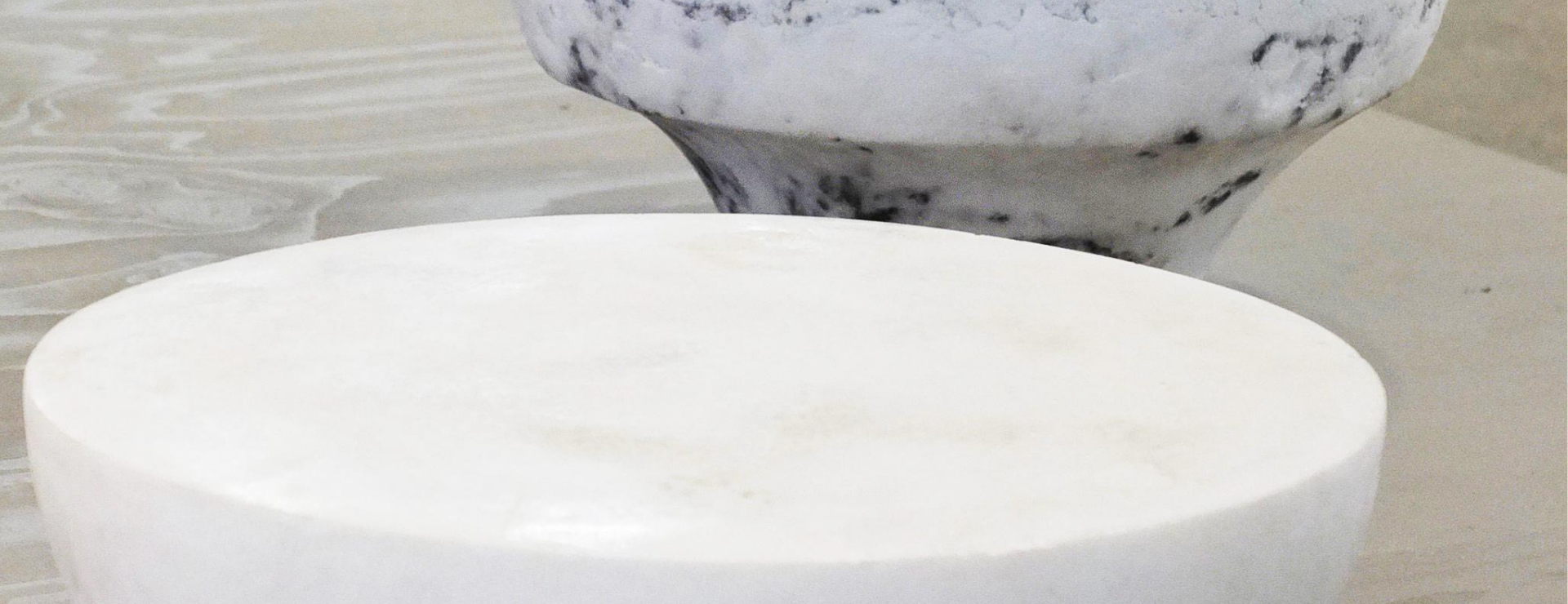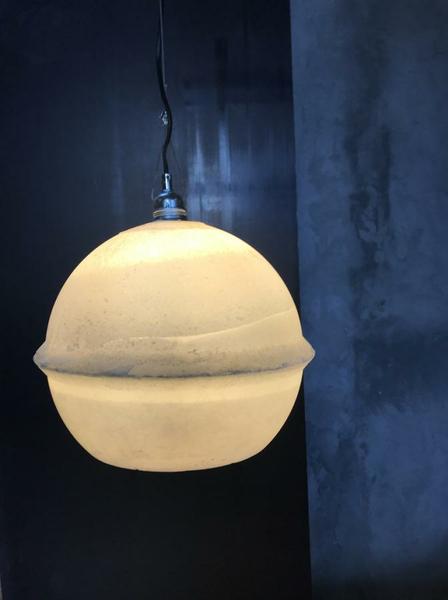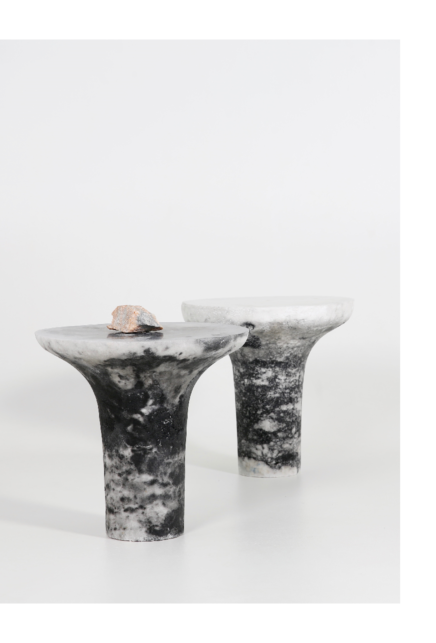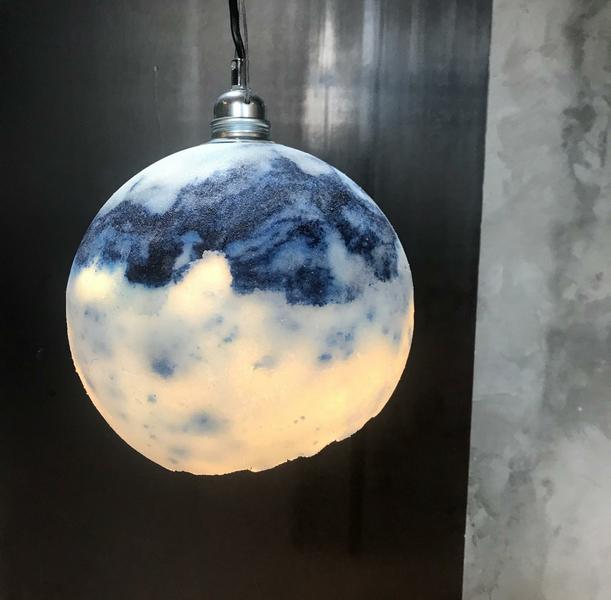
The project
Marble-like designer stools manufactured using salt as the main material.
THE CHALLENGE
The challenge is to obtain an affordable alternative to natural stone while being decisively more ecological than comparable and mainstream artificial stone, which uses up to 50% of plastics.
SOLUTION
The Marbled Salts project offers endless possibilities in terms of shaping and stone imitation: as any stone composite, it is molded and therefore causes virtually no residual waste. Based on customers’ feedback and increased inquiries, they need new designs and improved conceptions, and overall larger products. The partnership’s first prototype consists of coffee tables and other interior products with legs providing stability and an inner reinforcing steel structure connecting the legs to the tabletop.
Storytelling
THE IDEA:
The Marbled Salts idea came from a workshop of several weeks I did in Arles with the LUMA Foundation: I discovered salt as a largely available resource to craft an ecological stone substitute causing virtually no waste in the process and fell In love with it.
I instantly imagined a stone-like composite which could be produced all around the planet and crafted into objects following local economies, cultures, lifestyles and therefore identities. I come myself from a multicultural background and was raised in a nomadic lifestyle.


THE CREATIVE PROCESS:
I developed the material as a viable design product during my studies at DAE by digging in traditional Italian artificial marble craftsmanship and techniques such as stucco Marmo and scagliola as inspirations.It did only become my master project but also the core of my practice. With the Worth Partnership project I wanted to bring the Marbled Salts idea to a wider range of customers in the means of adapting both materials and objects to a product suitable for the mainstream industry.


THE COLLABORATION:
My collaboration with Fabienne, an expert mould maker who worked with renowned Belgian artists allowed us to discuss on the object’s processing, the material density and how to manufacture from it. We exchanged on technical solutions to produce both the mother shape and the mould.
The research and development of the lamp as a final product is still ongoing. We found that crafting a visually balanced but simple shape was not easy to produce at all and lead us to divide the process into several moulding tests after validating material samples proving a satisfying combination of resistance, translucency and sea salt amount.


THE FUTURE:
The moulding method is still to be improved and injection is being increasingly considered when it comes to upscaling the production; as well as developing a colour palette and in the future, a wider range of dwelling objects for the interior to complete the collection.
The preservation of traditional craftsmanship and the environment played a key role throughout the whole development phase.


THE MESSAGE:
This project constitutes a new step in spreading alternative materials developed by indépendant researchers who seek to implement them in a local market and propose new types of objects as well as a circular economy while supporting local craftsmen and promote their knowledge and practice.


- Project locations
- FranceBelgium
- Projects Edition
- WORTH Partnership Projects I
- Project Call
- 3rd Call Projects
- Project Sector
- Furniture, home decoration, interior design and architecture
- Project Challenge
- High-performance materials
Contact
ROXANE LAHIDJI
A product designer with a range of expertise in material development, Crafts & Interiors.
- Name
- ROXANE LAHIDJI
- Postal address
France
FABIENNE MASSART
Working for more than 20 years, he developed an expertise in different techniques of molding and sculpture. The applications are as varied as the materials used and he collaborates with architects, designers, artists and individuals.
- Name
- FABIENNE MASSART
- Postal address
Belgium
